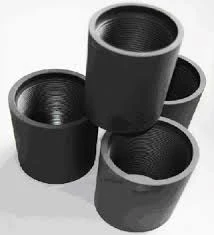- Afrikaans
- Albanian
- Amharic
- Arabic
- Armenian
- Azerbaijani
- Basque
- Belarusian
- Bengali
- Bosnian
- Bulgarian
- Catalan
- Cebuano
- Corsican
- Croatian
- Czech
- Danish
- Dutch
- English
- Esperanto
- Estonian
- Finnish
- French
- Frisian
- Galician
- Georgian
- German
- Greek
- Gujarati
- Haitian Creole
- hausa
- hawaiian
- Hebrew
- Hindi
- Miao
- Hungarian
- Icelandic
- igbo
- Indonesian
- irish
- Italian
- Japanese
- Javanese
- Kannada
- kazakh
- Khmer
- Rwandese
- Korean
- Kurdish
- Kyrgyz
- Lao
- Latin
- Latvian
- Lithuanian
- Luxembourgish
- Macedonian
- Malgashi
- Malay
- Malayalam
- Maltese
- Maori
- Marathi
- Mongolian
- Myanmar
- Nepali
- Norwegian
- Norwegian
- Occitan
- Pashto
- Persian
- Polish
- Portuguese
- Punjabi
- Romanian
- Russian
- Samoan
- Scottish Gaelic
- Serbian
- Sesotho
- Shona
- Sindhi
- Sinhala
- Slovak
- Slovenian
- Somali
- Spanish
- Sundanese
- Swahili
- Swedish
- Tagalog
- Tajik
- Tamil
- Tatar
- Telugu
- Thai
- Turkish
- Turkmen
- Ukrainian
- Urdu
- Uighur
- Uzbek
- Vietnamese
- Welsh
- Bantu
- Yiddish
- Yoruba
- Zulu
well tubing and casing
Well Tubing and Casing Essential Components of Oil and Gas Production
In the world of oil and gas extraction, well tubing and casing play crucial roles in the structural integrity and functionality of a well. These components ensure that the extraction process is not only efficient but also safe, preventing contamination and maintaining the overall stability of the borehole. Understanding the differences and functionalities of tubing and casing can significantly impact the success of drilling operations.
What is Casing?
Casing refers to a series of steel pipes that are used to line the walls of a wellbore after it has been drilled. The casing provides structural support to the well, preventing the collapse of the surrounding geological formations. It is installed in sections, with each section being welded or threaded together. Casing is typically cemented in place to create a barrier between the wellbore and the surrounding earth, ensuring that fluids from different geological layers do not mix.
There are several types of casing, including surface casing, intermediate casing, and production casing. Surface casing is installed first, extending from the surface to a specific depth, and is crucial for protecting groundwater sources from contamination. Intermediate casing follows and is often used for deeper formations. Finally, production casing, which is the last layer, allows oil and gas to flow into the wellbore from the reservoir.
What is Tubing?
Tubing, on the other hand, is a smaller diameter pipe that runs inside the production casing. It serves as the conduit through which oil and gas are produced from the reservoir to the surface. Tubing is critical for the controlled extraction of hydrocarbons and is designed to handle high pressures and corrosive substances, which are commonly encountered in oil and gas environments.
Unlike casing, tubing can be removed and replaced as needed, allowing operators to maintain and repair the well more easily. Tubing is typically installed after the casing process and is equipped with various accessories, including packers and safety valves, to enhance functionality and safety during production.
well tubing and casing

The Importance of Well Design
The design of a well, including the proper selection of casing and tubing, is vital for optimizing production and ensuring safety. Factors such as the depth of the well, the type of formations encountered, the expected pressure and temperature conditions, and the composition of the produced fluids should all be taken into account. Engineers and geologists collaborate to determine the most suitable casing and tubing materials, as well as their respective diameters.
Using the right materials is crucial, as the casing and tubing must withstand harsh conditions, including high pressures, aggressive chemicals, and varying temperatures. Common materials used for casing and tubing include carbon steel and various alloys, chosen for their durability and resistance to corrosion.
Challenges and Considerations
The wellbore environment is often complex and unpredictable, presenting various challenges that require careful management. Issues such as gas kick, water influx, and well blowouts can arise if the casing and tubing are not properly installed or if they fail during operations. Continuous monitoring and regular maintenance of these components are essential to mitigate risks and enhance the longevity of the well.
Furthermore, advancements in technology have led to innovative solutions, such as the development of composite casing materials and advanced cementing techniques. These innovations aim to improve the performance and safety of wells in increasingly challenging environments.
Conclusion
In conclusion, well tubing and casing are integral to the successful operation of oil and gas wells. These components not only provide structural integrity and facilitate production but also play a critical role in ensuring environmental safety. As the industry continues to evolve, ongoing research and development will further enhance these essential elements, paving the way for more efficient and safer energy extraction practices. Understanding their significance is fundamental for anyone involved in the oil and gas sector, from engineers to policymakers.
-
Tubing Pup Joints: Essential Components for Oil and Gas OperationsNewsJul.10,2025
-
Pup Joints: Essential Components for Reliable Drilling OperationsNewsJul.10,2025
-
Pipe Couplings: Connecting Your World EfficientlyNewsJul.10,2025
-
Mastering Oilfield Operations with Quality Tubing and CasingNewsJul.10,2025
-
High-Quality Casing Couplings for Every NeedNewsJul.10,2025
-
Boost Your Drilling Efficiency with Premium Crossover Tools & Seating NipplesNewsJul.10,2025







